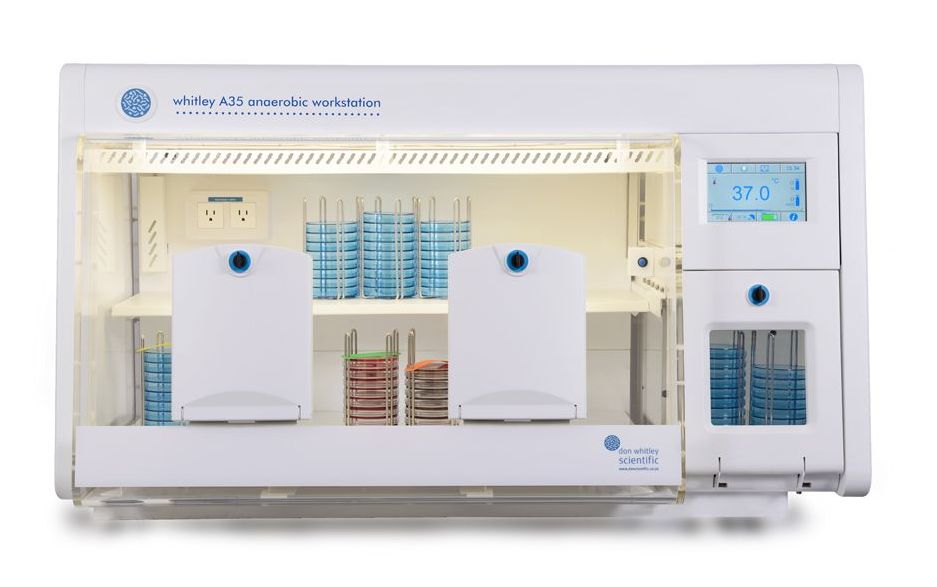![Quorum sensing (QS) is a communication system used by some bacteria to regulate gene expression within a local population, correlating to cellular density [1].](https://www.dwscientific.com.au/storage/app/uploads/public/d87/257/749/800_600_0_0_crop/loading-mid.png)
Quorum sensing (QS) is a communication system used by some bacteria to regulate gene expression within a local population, correlating to cellular density [1]. QS can happen between cells within a single bacterial species or between diverse species in a biofilm. The pathways are mediated by molecules called autoinducers; gram positive bacteria use oligopeptides, known as AIPs and gram negative bacteria use acylated homoserine lactones (AHLs) as signalling molecules [2]. Bacteria use QS communication circuits to exert phenotypes. These physiological characteristics include: symbiosis, virulence, conjugation, antibiotic resistance, motility, sporulation, and biofilm formation [5].
Recent research has furthered our understanding of this microscopic communication network, and has suggested that the early model of QS, based only on cell density, is an oversimplification of the mechansim. Bettenworth et al (2023) have studied the stochastic pulsing in LuxR-LuxI-type QS system and stated in a recent publication that in the bacterium Sinorhizobium meliloti (now reclassified as Ensifer meliloti), the activation of the autoinducer synthase gene is mediated by several physiological factors, similarly to what has been found in Erwinia carotovora (Pectobacterium carotovorum) and Pseudomonas aeruginosa QS systems [3]. The research group propose that S. meliloti QS operates via a frequency-modulated pulsing mechanism. The pulse frequencies of autoinducers of the cellular population are then integrated to initiate a behaviour based on each cell’s physiological need [3].
Given the interest in alternatives to conventional antibiotics, research is intensifying in identifying new targets to disrupt cell growth. Targeting QS circuits is a viable therapy to control cell proliferation and increased transcription of pathogenicity-associated genes [4].
Luz-Veiga et al (2023) recently reported on the antimicrobial effect of Cannabidiol (CBD) and Cannabigerol (CBG) on organisms that readily colonised the skin or were part of the skin microbiota, including Staphylococcus epidermidis, Staphylococcus aureus, Streptococcus pyogenes, Cutibacterium acnes, P. aeruginosa and Escherichia coli. The team used a Whitley A35 Anaerobic Workstation to perform anaerobic assays with n C. acnes cultures. The team conducted MIC testing, using the CBD and CBG compounds, and collated MIC and MLC values for all organisms [5]. They then established that CBD and CBG either reduced or inhibited biofilm formation within a dose dependent manner, by interfering with QS mechanisms and affecting metabolic pathways [5]. The team suggested that the compounds could be used as a cosmetics preservative, as the extracts showed no impact on the skin microbiota.
Written by DWS Microbiologist Charlotte Austin
References
- Sonam Tripathi, Diane Purchase, Muthusamy Govarthanan, Ram Chandra, Sangeeta Yadav (2023) Regulatory and innovative mechanisms of bacterial quorum sensing–mediated pathogenicity: a review. Environmental Monitoring and Assessment
- Shafiul Haque, Dinesh K Yadav, Shekhar C Bisht, Neelam Yadav, Vineeta Singh, Kashyap Kumar Dubey, Arshad Jawed, Mohd Wahid, Sajad Ahmad Dar (2019) Quorum sensing pathways in Gram-positive and -negative bacteria: potential of their interruption in abating drug resistance Journal of Chemotherapy
- Vera Bettenworth, Simon van Vliet, Bartosz Turkowyd, Annika Bamberger, Heiko Wendt, Matthew McIntosh, Wieland Steinchen1,6, Ulrike Endesfelder, Anke Becker (2023) Frequency modulation of a bacterial quorum sensing response. Nature Communications
- Zoya Peerzada, Mayank D. Shah, Prashant S. Kharkar, Krutika B. Desai (2023) Exploration of the inhibitory effect of Cassia fistula on quorum sensing mediated virulence factor production and biofilm activity in Pseudomonas aeruginosa: an in vivo study in model organism Caenorhabditis elegans Microbiology Society Journal of Medical Microbiology
- Mariana Luz-Veiga, Manuela Amorim, Inês Pinto-Ribeiro, Ana L. S. Oliveira, Sara Silva, Lígia L. Pimentel, Luís M. Rodríguez-Alcalá, Raquel Madureira, Manuela Pintado, João Azevedo-Silva, João Fernandes (2023) Cannabidiol and Cannabigerol Exert Antimicrobial Activity without Compromising Skin Microbiota. International Journal of Molecular sciences


 au
au

 English
English